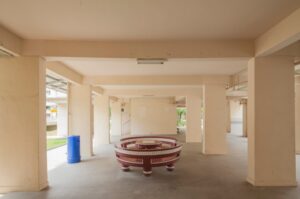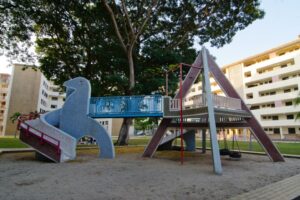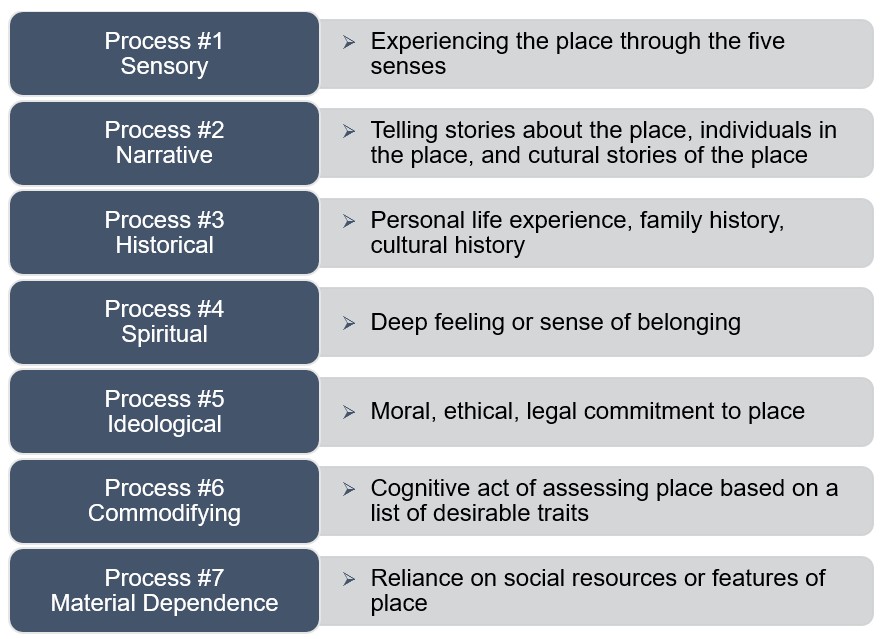SSR Snippet - June 2025 Issue 2

The Social and Spatial Practices of Street-Involved Adolescents in Singapore
Flora Tan Chunxiu (Care Corner Singapore Ltd)
Keywords: youth work, public space, adolescent development, youth at-risk, youth crime, street youths, street outreach, place attachment
Introduction
The role of the environment has always been a central feature in social work, as various systems impact clients’ experiences. Research highlights the importance of space and place in shaping human development (Proshansky, 1983). The physical places people occupy influence their sense of belonging, safety, and well-being, as well as their experiences in their communities. Adolescents, in particular, navigate identity formation in place-specific ways (Benwell, 2009; Chatterton and Hollands, 2003).
This study focuses on adolescents’ experiences in public spaces — areas that are “publicly owned or of public use, accessible and enjoyable by all for free and without profit motive” (UN Habitat, 2015: 15). Public spaces such as parks, streets, plazas, and playgrounds shape urban life and access to social, cultural, and economic capital (Costa, Batista, and Menezes, 2021; UN Habitat, 2015).
In this study, I explore the social and spatial practices of street-involved adolescents in Singapore, societal perceptions of adolescents in these spaces, and the opportunities afforded by public spaces for adolescent development.


Literature Review
Perceptions of Adolescents in Public Spaces
Adolescents in public spaces are often portrayed as a problem, with the media depicting them as rowdy, inconsiderate, and unsightly (Collins and Kearns, 2001; Crawford and Lister, 2007; Freeman and Riordan, 2002; Pickering, Kintrea, and Bannister, 2011). The 2017 British Crime Survey listed adolescents loitering as a key measure of anti-social behaviour.
Locally, online articles reflect similar sentiments. A 2023 MS News article detailed resident complaints about noisy youths in Yishun who had created a makeshift lounge in a carpark. The article concluded with a reminder to all readers to be “considerate neighbours.”
In Singapore, various measures have been implemented to control adolescents’ presence in public spaces. These measures include frequent police patrol, skateboard ordinances, closed-circuit television, and warning letters issued by police officers to the parents of adolescents loitering late at night.
The Importance of Public Spaces in Adolescent Development
Understanding why adolescents use public spaces and their underlying needs can foster a more informed societal response to their behavior. Academics and practitioners advocate for public spaces as vital resources for adolescents’ participation in urban life. As adolescents navigate an ever-changing social landscape, they occupy public spaces to gather with peers, socialise, or just hang out, which is also a way of participating in society (Woolley, 2003).
Sand (2017) argues that young people seek spaces for self-organisation, play, and creativity. They seek sensory excitement, which includes the possibility of authorities interfering with their activities, thus reflecting their openness to unpredictable spatial practices that produce new embodied experiences. Such a spatial process constitutes one of Cross’s (2015) processes of place attachment (see Figure 1).

Figure 1: Place Attachment Processes
Research Method
This exploratory qualitative study investigates adolescents’ experiences and perceptions in a public space, specifically, a youth hotspot in northeast Singapore. The area has a strong police presence and surveillance measures. On average, 20–30 adolescents aged 13–18 occupy the space from 3:00 p.m. to 12:00 a.m. Their activities include scootering, performing bicycle tricks, smoking, vaping, socialising, and occasionally engaging in physical fights.
I draw on three data sources: (i) a photo-elicitation exercise (Romera Iruela, 2023) and a focus group with two adolescents who frequent the space; (ii) a semi-structured interview with a security guard who patrols the space; and (iii) field notes from youth workers who visited the space regularly over six months. The data captures adolescents’ social and spatial practices, the meanings they attach to the space, and the experiences of those who patrol the space and/or observe the adolescents.
The data from these three sources were triangulated and analysed using narrative analysis. It was coded according to the beginning, middle, and end of a story about place processes among street-involved adolescents. The discussion was guided by three concepts of narrative analysis: (i) temporality — events in transition over time; (ii) sociality – the personal and social conditions shaping participants’ emotions, hopes, and attitudes; and (iii) place – the specific spatial context of the events (Ntinda, 2019; Rodriguez, 2016).
Findings: A Story of the Place Processes among Street-involved Adolescents in a Public Space
Story Timeline – Beginning
The story begins with adolescents’ fundamental developmental need for social engagement. The space is a gathering point for common interests to be shared and experienced, along with opportunities to connect with other youths in the space. Youth A shared that he hangs out there to “find friends only. At home nothing to do one.” However, a youth worker noted that “different groups of fixie[1] riders share the space and do not really mingle around.”
Sensory-related place attachment processes also feature in the beginning of narratives with participants commenting on the environmental attractiveness of the space. A youth worker observed that “the ground of the space is smooth enough for fixie riders to practice their tricking” while the security guard opined that adolescents enjoy hanging out in this area because it is a “nice place, big area . . . quite relaxing.”
Along with these place attachment processes are the introduction of regulatory measures to manage the behaviour youths in the space. Youth workers noted frequent sightings of “LTA (Land Transport Authority) at the space” and how the “security guards were loitering around the area.” There was also an instance of “a Caucasian adult male (who) came by on two occasions – first was to ask the youths to tone down their vulgarities, and second was a more extensive lecture about being mindful of their surroundings.” The security guard considered these measures to be necessary as he perceived the youths’ behaviours to reflect a lack of public consciousness. He lamented about youths smoking in public view: “You sitting there what you do the public can see. But (the youths) don’t care. The public walk past they also don’t care.”
These interactions appear to have impacted the youths’ perceptions of adults as the youth workers reported the youths expressing suspicion towards them. The youth workers noted that the youths had “asked if workers were from SSB (Secret Societies Branch) when first approached” and were “initially evasive about their real names.”
Story Timeline – Middle
As the adolescents spent more time in the area, material-dependent place attachment processes surfaced. The presence of youths in the space could reflect a lack of meaningful opportunities to be engaged. The security guard seemed to be aware that some of the youths frequenting the space had quit school. “(One of them) keep long hair mah . . . I ask him why his hair like that, can go school meh? He say no la, I quit from school already . . . Then I ask him what you want ah? Every time I see you come here, loitering around never do anything.” A youth worker remarked that “most youths might not be meaningfully engaged outside of school . . . some youths go down to the space for ‘entertainment’ and conversations at times are not productive.”
The social interactions of adolescents in this space provided opportunities for them to express certain perspectives and beliefs. In negotiating peer hierarchy, there was an observed use of aggression to resolve conflicts. A youth worker reported: “(Youth A) was beaten at one of the benches by (Youth B and his friends) after badmouthing him. Dried blood stains were spotted.” Youth B also said that the area has “a lot of angkat paiseh[2] people . . . they tio whack right then after that they kneel down there then they have to apologise.”
Meanwhile, the adolescents actively avoided law enforcement personnel who visited the area. A youth worker noted that “there were less youths in the space because of increased enforcement presence . . . youths were vigilant.” The security guard likewise observed that “maybe late afternoon then those kids will come . . . now I see a bit lesser already because now the police come very often.”
As the story of place attachment unfolds, negative perceptions of the adolescents’ behaviours in the space continue to prevail. The security guard reflected a general view of these adolescents as being immature: “Why they got this type of behaviour? They quite big children already right. Around 15, 16 leh, not like those small kids.” He also recalled some unpleasant interactions with them: “Last time they use vulgar words talk to me . . . never respect you . . . can’t be bothered that you are security.” Behaviours displayed by the adolescents continued to cement perceptions of their lack of public consciousness. The security guard recalled instances when the adolescents had performed bicycle tricks: “floor all dirty, got the tyre marks . . . then when you ask them, they say not I do one.” He also observed that they were inclined to leave their rubbish lying around in the area: “they eat they throw there, just left it.”
In turn, the adolescents were increasingly suspicious of law enforcement personnel. A youth worker noted that “youths were also observed to decide if they should run when new faces approach them in the space as they were afraid they were authority figures.”
Story Timeline – End
As the narrative progresses, ideological and commodifying place attachment processes become more prominent as the adolescents make sense of their experiences in the area. They began to think of the space as having an unseemly reputation, reinforcing negative perceptions of the adolescents who use the space. Youth A shared: “You think . . . hang out here? I mean have is have la. But if they hang out here, later their name drop sia.” When asked what had given the space a bad name, they cited “YPs (young punks),”[3] “XDDs,”[4] “the rioting case,” and “the riding community.”[5]
This development highlighted the ability of adolescents to commodify a space based on desirable and undesirable traits. The adolescents clearly valued privacy and the absence of surveillance. A youth worker observed: “Youths shared there were police earlier in the day and youths decided to change their hang-out location to avoid them.” The security guard remarked on the inconvenience and trouble that police presence caused for the adolescents: “They say here got a lot of ampai.[6] I told them if you do nothing wrong, why need to run? They don’t want their particulars to be recorded . . . Sometimes the police come they throw (cigarettes and vapes) inside the bush.”
The actions of adolescents in the space raise questions about who is responsible for managing their presence in public spaces. The security guard placed the responsibility primarily on the adolescents: “This kind of thing must depend on them la. They must change their attitude right or not.” However, he also considered the role of the youth workers: “You can change their behaviour or not? I now then know (you all) are social workers leh. I thought you were together with them . . . I see you quite matured then can talk to them la. I think they still never change much.”
Youth workers in the area have intervened, especially when the adolescents were behaving aggressively. A youth worker documented: “A group of another 5–6 youths were around when Worker Z stopped Youth B and asked what he wanted to gain out of (beating someone). Worker F made her way to the basketball court with the intent of getting (the victim) away.”
As youth workers increasingly established their presence in the area and built connections with the adolescents who hung out there, the adolescents began to include the youth workers as part of their individual and group processes of identity formation. A youth worker noted: “The older youths had jokingly gathered around Youth B, pretending to want to beat him. Before this happened, Youth A remarked: ‘Eh youth workers also want to see ah?’”
When the two youths were interviewed for this study, they told the researcher: “I good boy one.” One of them assured the researcher that although he used to participate in some of the physical fights in the area, he has now changed: “Okay la last time have (fights). I was young and naive. Don’t blame me.”
Discussion
Street-involved youths engage in place attachment processes that coincide with developmental processes in adolescence
Adolescents experience and evaluate places based on comfort and enjoyment, with particular focus on opportunities for social interaction, leisure, and stimulation. These place attachment processes align with their search for peer connections. For youths who are less engaged in formal systems like school or family, public spaces offer opportunities to meet new people and form relationships. As they explore their interests, they gravitate toward spaces that support street activities such as fixie and fiido riding.
Public spaces also serve as a stage where youths develop their internal moral compass and personal value system. In their social interactions, themes of justice and fairness arise. Peer acceptance becomes crucial; influence and control are recognised as means of establishing presence in the space while certain behaviours are sanctioned through acts of aggression. However, measures regulating activities such as vaping or brakeless riding are seen as inconveniences imposed by law enforcement, prompting youths to use street wisdom to navigate these interactions and assert their autonomy.
Over time, street-involved adolescents develop a consistent set of criteria for desirable public spaces. They prioritise areas with low surveillance that allow them to continue engaging in acts that could warrant legal intervention. Their shift from open public areas to the nearby basketball court reflects another key theme in place and space studies — high mobility across spaces. As many youths in the area own bicycles (both fixed gear and motorised), they enjoy the open linkways that extend their reach across spaces. This is one reflection of the growing need for independence among adolescents as they now possess their own mode of transportation and are hence able to determine their movement across spaces, typically a privilege enjoyed by adults.
Societal perceptions of adolescents in public spaces are generally negative
Public spaces are meant for use, yet social norms dictate who belongs there. This study reveals widespread societal disapproval of youths congregating in these areas due to concerns over potentially dangerous or antisocial activities. This perception reflects a broader societal belief that youths should be at home or in school — the normative sites of adolescent development. The streets and public spaces are seen as risky and rife with negative influences.
Societal perceptions of adolescents in public spaces are reinforced by a sociopolitical climate where the media frequently highlights the need to regulate youth activities in such spaces. Beyond traditional news outlets, even youths themselves act as online vigilantes, policing negative behaviors among their peers.
Conclusion
My investigation of the role of public spaces in adolescent development reveal two key findings. First, these spaces serve as a stage for street-involved youths to explore different aspects of themselves through performative interactions. These sites of performativity offer rich insight into the way adolescents develop and make meaning of who they are and the communities they belong to.
Second, public spaces provide a shared environment where youths and adults can interact, fostering socialisation. How we — as members of the public who use and travel through public spaces — perceive street-involved youths can influence the way we interact with them.
Public spaces not only reflect human identity and community belonging but also shape adolescent growth. This insight can guide youth workers, policymakers, and urban planners in designing environments that support adolescent well-being and development.
Footnotes
[1] Fixie: Refers to a fixed gear bicycle that has a single speed, no brakes, and no freewheel.
[2] Angkat paiseh: Hokkien slang used among youths to mean “apologise for disgraceful behaviour” with the apology often being delivered in a humiliating manner.
[3] Young punks: urban slang used to refer to street-involved youths who may be disruptive in public or commit crimes.
[4] XDDs: acronym for the Chinese words “xiao di di,” referring to male youths who tend to be attention-seeking or who are known for anti-social activities.
[5] Riding community: fixie riders in Singapore who typically form social groups.
[6] Ampai: Malay word used as slang among street-involved youths to refer to the police.
References
Benwell, M.C. (2009). “Challenging Minority World Privilege: Children’s Outdoor Mobilities in Post‐Apartheid South Africa.” Mobilities, 4(1), 77–101.
Chatterton, P. and Hollands, R. (2003). “Urban Nightscapes: Youth Cultures, Pleasure Spaces and Corporate Power.” New York: Routledge.
Collins, D.C. and Kearns, R. A. (2001). “Under Curfew and Under Siege? Legal Geographies of Young People.” Geoforum, 32(3), 389–403.
Costa, C.S., Batista, J.S., and Menezes, M. (2021). “What Happens When Teenagers Reason about Public Open Spaces? Lessons Learnt from Co-creation in Lisbon.” Cidades. Comunidades e Territórios, (43).
Crawford, A. and Lister, S. (2007). “The Use and Impact of Dispersal Orders.” Bristol, UK: Joseph Rowntree Foundation.
Cross, J.E. (2015). “Processes of Place Attachment: An Interactional Framework.” Symbolic Interaction, 38(4), 493–520.
Freeman, C. and Riordan, T. (2002). “Locating Skateparks: The Planner's Dilemma.” Planning Practice and Research, 17(3), 297–316.
Ntinda, K. (2019). “Narrative Research.” In P. Liamputtong, Handbook of Research Methods in Health Social Sciences. Springer Singapore, 411–423.
Pickering, J., Kintrea, K., and Bannister, J. (2012). “Invisible Walls and Visible Youth: Territoriality Among Young People in British Cities.” Urban Studies, 49(5), 945–960.
Proshansky, H.M. (1983). “Place Identity: Physical World Socialisation of the Self.” Journal of Environmental Psychology, 3, 299–313.
Rodriguez, M.C.G. (2016). “‘The Stories We Tell Each Other’: Using Technology for Resistance and Resilience Through Online Narrative Communities.” In S.Y. Tettegah and Y.E. Garcia, Emotions, Technology, and Health. Academic Press, 125–147.
Romera Iruela, M.J. (2023). “Photovoice and Photo-elicitation: Similarities, Differences, Incorporation and Contribution in In-service Teacher Training.” In A.B. García-Vera, Photographic Elicitation and Narration in Teachers Education and Development. Springer International Publishing, 61–75.
Sand, A.L. (2017). “Jamming with Urban Rhythms: Improvisatorial Place-making Among Danish Youth.” Young, 25(3), 286–304.
UN-Habitat (2015). “Informal Settlements (Habitat III Issue Paper 22).” Nairobi: UN-Habitat.
Woolley, H. (2003). “Urban Open Spaces.” Taylor & Francis.
Edited by Ong Ee Cheng (Social Service Research Centre, NUS)

